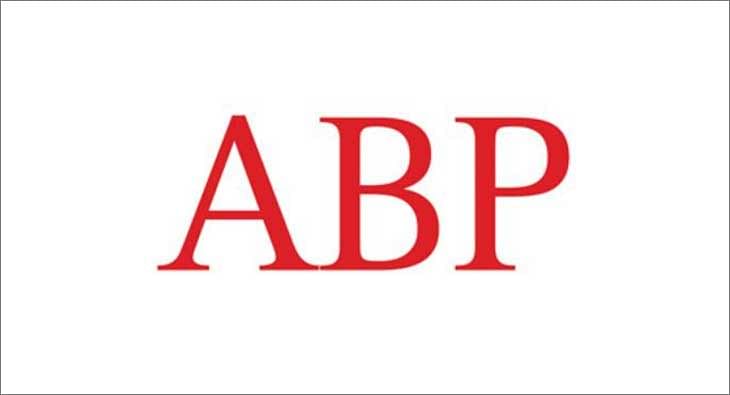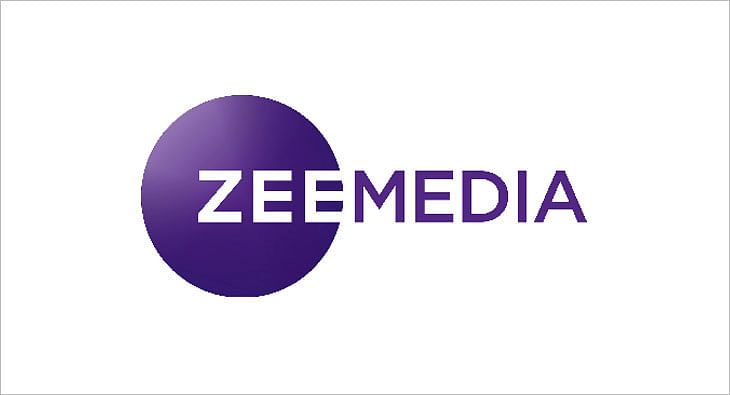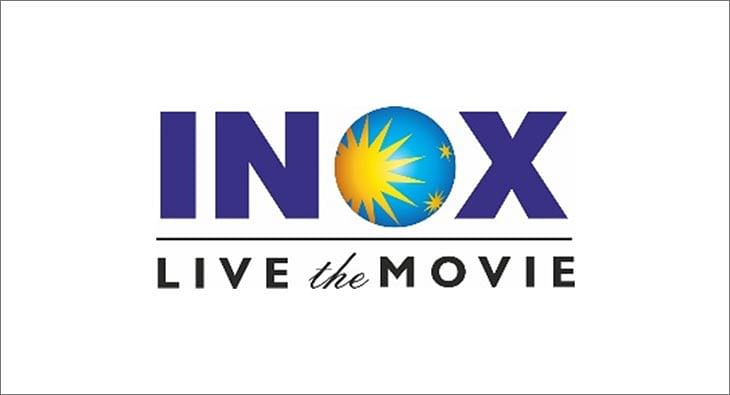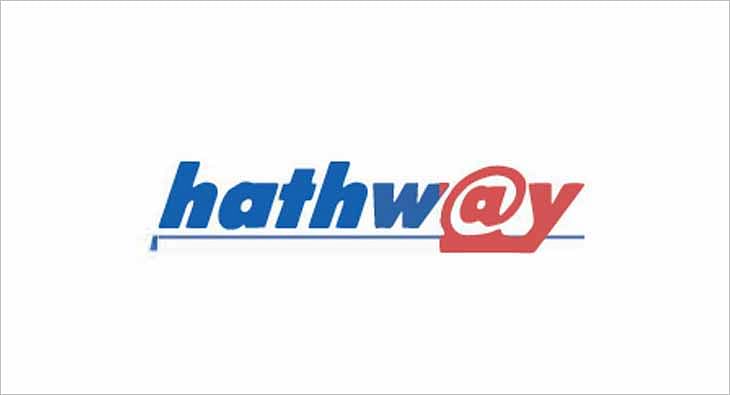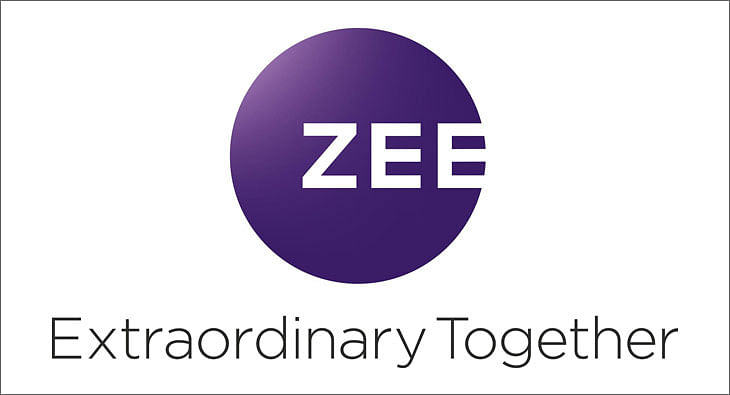Guest Column: Journalism 3.0 - News ecosystem fast evolving
The news ecosystem is fast evolving. With all the new tools & capabilities, we should be entering a new golden age of online journalism, says Alok Verma

Journalism traditionally has involved a mostly one-way communication from producers to consumers. Until now, journalists gather and edit news, then distribute it to people who consume it rather passively. Journalism continued to flourish this way as the information so far was scarce, gathering and distributing it was expensive and technology was nowhere an enabler.
Whatever has for been published or broadcast by journalists there has been minimal public involvement in the functions of journalism and diminishing public trust in its performance. That has begun to change profoundly and permanently. Technology is opening amazing possibilities to give people convenient access to both civic and life-enhancing information, without regard to income or social status.
What one has been witnessing in the last two years is fresh thinking and new approaches to the gathering and sharing of news and information. The Internet and digital communication technologies are remarkably changing what is possible. Information is moving from scarcity to over-abundance; distribution from expensive to cheap, and news consumption from passive to interactive. People now have unprecedented ability to be their own reporters, editors and distributors of information.
Examples of this dramatic shift abound, but none is more powerful than the “Facebook Revolution” in Egypt. The social network enabled protestors to organise, coordinate and act.
Traditional media, most notably newspapers in the US, have been severely impacted by the faltering economy and by a fundamental shift of advertising revenue to the Internet. In response, a large number of American newspapers have cut journalistic resources dramatically. The result is less reporting of all kinds, but especially the independent local reporting that holds government and the private and corporate sector accountable and that helps people to participate fully in their communities. The same has been reflecting in the diminishing advertising revenues of the traditional media in India too.
Technological Disruption—Advance Local Journalism
There has been an increase in emerging news media and exciting examples of journalism being created in non-traditional settings. In some cases this emerging journalism can address coverage needs that were never effectively reported by traditional media, such as neighborhood news. This is complementing but not replacing the reporting lost in traditional media. In a time of technological disruption, it is difficult to know what might advance local journalism.
So the first priority is experimentation—tries everything, learn from what does not work and build on what does. Experimentation is needed in new business models for journalism, in new strategies for public and non-profit journalism and in new funding strategies for foundations.
The second order of business is collaboration. Competition is necessary for a healthy news ecosystem, but may not be sufficient. Modern news and information is an intensely interactive ecosystem in which all elements interrelate, making collaboration essential.
The third priority is public or community engagement. Digital technology enables news consumers to participate meaningfully in all of the traditional functions and purposes of journalism. Engagement is at the heart of re-inventing journalism, but it requires journalists to rethink their role. They need to enable people to act collectively in networks that create and share information.
It will be interesting to mention Seattle, Washington which actually witnessed emergence of hyper local websites abound in neighbourhoods following the loss of city’s two daily newspapers-the King Country Journal and The Seattle Post-Intelligencer. The two newspapers suffered on account of substantial losses in mainstream journalistic resources and changing local news and information ecosystem.
Interestingly, after stopping the printing in 2009 The Seattle Post-Intelligencer switched to become an online-only publication in Seattle. Now the site serves about 4 million readers each month, about the same number as when the newspaper was printing. Its staff of about 20 people generates news content that is augmented by media partnerships, content from the community and curated content in partnership with other media.
The city's only newspapers the Seattle Times after having lost money every year through the past decade because of decreasing print advertising could manage to survive until now is due to the reason that almost 60 percent of the newspaper journalism jobs that existed do not exist any longer.
Journalism 3.0
Michele McLellan studied emerging news sites as a 2009/2010 Donald W. Reynolds Journalism Institute fellow at the Missouri School of Journalism. She found a stark contrast in terms of community engagement between traditional and emerging powerful online media. “Community connectedness and diverse revenue streams are critical ingredients for success for non-profit news organizations,” she reported. “I was struck by how different they (emerging online media) sound from the ‘old traditionals’ like the newspaper newsrooms where I worked. We used to talk about serving the community. But with the advertising dollars flowing, we did not really depend on our communities and as a result, we did not always know them or reflect them effectively. So it’s refreshing and inspiring that the leaders of these ‘new traditionals’ see community engagement as a vital component of their future sustainability.”
Michele McLellan at the Reynolds Journalism Institute amassed a smart, comprehensive body of knowledge about the new news ecosystem. An extensive survey of 66 of the sites provides meaningful insights, including these findings:
Seven in 10 said they are greatly or somewhat optimistic about making their sites sustainable; none said they were not optimistic and only one said “somewhat unoptimistic.”
Fifty-six per cent of the sites said they operate as for-profits, and half of those said they made a profit in the previous year. About a third of the sites are non-profit.
Most of the sites are relatively young. More than half launched less than two years ago; more than a third launched within the last two to five years.
Many traditional news organizations are one disaster away from extinction. They have cut costs so drastically in the past decade that more significant cutting could put them into a death spiral. Many do not have the financial strength to survive another 9/11 terrorist attack or subsequent economic downturn. Many of the traditional media organizations actually lost ground to the online media for they failed to foresee the changing behaviour of news users’ interaction with information online. The online media scored over the traditional media by turning that knowledge into new services, products and revenue streams. In fact, the online media majorly focused on relevance, research and revenues to strengthen its business model.
Ever since the online media on its strength of 3Rs of relevance, research and revenues have been working earnestly to understand and utilize market incentives for building engagement, loyalty and financial support. Most of the online media have been demonstrating about how their journalism can be made relevant to the communities they are serving, especially when news consumption habits are shifting dramatically.
So, relevance is more about understanding the value propositions for consumers, advertisers and sponsors. What benefit do they derive from the time, attention or money spent? Whether the penny comes from advertising, pay-for-content, donations or transactions, revenues are a function of the value that is provided. Value is not about merely giving people what they want; it is about knowing what matters to them and establishing a relationship of trust and enrichment. It is about respecting their values in the news judgments one makes. Interactive technology enables more meaningful connections between news producers and consumers than ever before.
Advertisers, too, are changing. They are increasingly able to bypass media as a go-between with potential customers. Digital technology promises to give them unprecedented knowledge of whether and how their ad revenues are effective. The effect is ravaging the business model that sustained journalism for the past century.
Content creators and technology service providers are also collaborating to develop shared principles and mechanisms to protect content from misuse and to appropriately compensate creators for the value of their work. This has indeed stimulated new forms of journalism from traditional and emerging media, and has encouraged the growth of new technology and services.
In fact, the emerging media has been experimenting with new revenue models that go beyond traditional notions of money from paid circulation and advertising. Among the notions being explored are the following:
“Local Online 2.0” positions local media sales forces as experts in the digital space for small businesses;
Ad sales networks in which online media works with local ad agencies to help local advertisers collect, analyze and present data on performance and return on investment;
Experimenting with revenue models outside the traditional role of intermediary for advertisers, including the possibility of direct involvement with commerce;
Brokering web marketing services;
Integrating web marketing services with online and social media and personalization;
Providing consulting services to local businesses in the use of online and social media;
Running sponsored messages through a public media ad sales network.
The news ecosystem is fast evolving and learning how it can be open, diverse, inclusive and effective. With all the new tools and capabilities we should be entering a new golden age of online journalism—call it journalism 3.0.
The author is Editor-in-Chief, www.newzstreet.com and former Executive Editor, TV Today Network, Star TV Interactive and Zee News
Read more news about (internet advertising India, internet advertising, advertising India, digital advertising India, media advertising India)
For more updates, be socially connected with us onInstagram, LinkedIn, Twitter, Facebook Youtube & Whatsapp
You May Also Like
HT Media posts Consolidated Total Revenue of Rs 580 crore in Q2
Chairperson and Editorial Director Shobhana Bhartia says due to lower commodity prices and control on costs there has been an improvement in operating profit
HT Media has posted a Consolidated Total Revenue for Q2, 2020 at Rs 580 crore.
As per a statement released by the company, EBITDA for Q2’20 increased by 139%, and margins at 14% vis-à-vis 6% in previous year. This has been driven by softening of newsprint prices and continued focus on cost.
The Net Cash position at a consolidated level continues to be strong.
The Print ad revenue has declined due to sluggish volumes, even as yields have improved. National advertising continues to be soft, although local advertising witnessed growth.
Savings in raw material costs have driven improvement in EBITDA margins.
Chairperson and Editorial Director Shobhana Bhartia said, “Slowing economic growth has hit advertising spends in key categories, putting pressure on revenues across the media industry. As a result, our Print and Radio (on like to like basis) businesses saw revenues dip as compared to a year-ago. However, thanks to lower commodity prices and a tight control on costs, we saw an improvement in our operating profit. On the digital front, Shine, our online recruitment portal has shown good progress and continues to grow. Our outlook for the coming quarter remains cautious, given overall economic sentiment and macroeconomic trends. Cost-control and falling commodity prices should help protect our margins.”
Read more news about (internet advertising India, internet advertising, advertising India, digital advertising India, media advertising India)
For more updates, be socially connected with us onInstagram, LinkedIn, Twitter, Facebook Youtube & Whatsapp
ABP Group posts Rs 15.70 crore as net profit in Q1 FY20
The group’s total operating income stands at Rs 365.55 crore
ABP Group has posted a net profit of Rs 15.70 crore in the first quarter of FY20, as per media reports.
The group’s total operating income stands at Rs 365.55 crore.
It’s net profit for the fiscal ended March 31, 2019, was down 68% to Rs 31.90 crore compared to the previous fiscal.
The Profit Before Interest Lease Depreciation and Tax (PBILDT) has also dropped 53.52% to Rs 107.12 crore.
The group has six news channels - ABP News (Hindi), ABP Ananda (Bengali) ABP Majha (Marathi) and ABP Asmita (Gujarati), ABP Sanjha (Punjabi) and ABP Ganga (Hindi).
Read more news about (internet advertising India, internet advertising, advertising India, digital advertising India, media advertising India)
For more updates, be socially connected with us onInstagram, LinkedIn, Twitter, Facebook Youtube & Whatsapp
Zee Media posts consolidated revenue of Rs 137.03 crore for Q2 FY20
ZMCL has recorded 4.4% growth in operating revenue for first half of FY20
Zee Media Corporation Ltd (ZMCL) has posted a 4.4 per cent growth in operating revenue to Rs 337.6 crore in the first half of FY20, as per media reports.
It has reported a consolidated revenue of Rs 137.03 crore for Q2 FY20.
In a statement, ZMCL has said: “During the quarter, the network expanded its footprint s into Southern India through the launch of Zee Hindustan in Tamil and Telugu languages. This is intended to make the network's content accessible to wider audience.”
The operating expenditure in Q2FY20 has dropped by 21.7 per cent.
The statement further said: “EBITDA for HlFY20 improved by 34.1 per cent to Rs 1,029 million from Rs 767.5 million EBITDA for H1FY19, while the same declined by 9.4 per cent to Rs 370.2 million from Rs 408.7 million for the corresponding period last financial year. EBITDA Margin grew from 23.7 per cent in H1FY19 to 30.5 per cent in HlFY20, while growing from 24.2 per cent in Q2FY19 to 27 per cent in Q2FY20.”
Read more news about (internet advertising India, internet advertising, advertising India, digital advertising India, media advertising India)
For more updates, be socially connected with us onInstagram, LinkedIn, Twitter, Facebook Youtube & Whatsapp
No slowdown here: In-cinema ad rates up by at least 50% for 3 big Diwali releases
Housefull 4, Made In China and Saand Ki Aankh ready to hit the silver screen this week, with the hopes of giving brands the eyeballs they look for in theatres
It’s that time of the year again when theatres gear up to pocket maximum gains. Diwali is here and there are three films ready to hit the silver screen this week--Housefull 4, Made In China and Saand Ki Aankh. The festive period brings much joy to exhibitors, distributors and theatre owners because it ensures footfalls, giving brands the eyeballs they look for. In fact, industry experts don’t feel that economic slowdown this year has impacted in-cinema advertising. While they are concerned about three movies clashing during Diwali, they predict 50-100 per cent rise in ad rates during this period.
Advertising moolah
Mohan Umrotkar, CEO, Carnival Cinemas, is expecting 60-70 per cent surge in advertisement topline compared to last year. “Going by the buzz and advance booking for these three releases, market is bullish. Advertisers have blocked most of the advt-slots during the festival period. Housefull 4, Made In China and Saand Ki Aankh all combined together should generate around Rs 350 crore topline at the box office during the festival week. We are expecting 60-70 per cent surge in the advertisement topline from last year. Also, this year we have added around 14 per cent new advertisers, and 4 per cent of them are first-time cinema advertisers,” he says.
But according to Siddharth Bhardwaj, Chief Marketing Officer - Head of Enterprise Sales, UFO Moviez, things have changed a lot in the last couple of years. “Since some films have not really lived up to their expectation, advertisers are spreading the spends all through the year. They are picking up far more number of titles in the year rather than focusing only on Diwali or Eid.”
“It is good for the industry because you can monetise the inventories beyond just big weeks. A lot of content- driven films have come up which has given us the opportunity to monetise more markets. It has put lesser pressure on Diwali. Most of the cinemas are sold out for Diwali. It becomes difficult to accommodate everything,” Bharadwaj opines. He also reveals that for this week, the inventories are already full.
Diwali ad rates
Experts reveal that ad rates differ from property to property and depends on location as well. But Diwali surely sees a massive hike in rates. This year, theatre owners are expecting 100 per cent rise in ad rates. While Umrotkar revealed that for Diwali, they are charging 100 per cent higher than the regular card rates, Girish Johar, trade analyst and film producer, shared that even the rates for putting up kiosks of brands go up during festivals like Diwali.
“It’s based on property. On a ballpark, ad rates double up. So if you are putting up a kiosk, they charge say Rs 50,000-25,000 for a month. During Diwali, they charge almost double because of the kind of footfalls theatres witness,” Johar revealed.
Economic slowdown? Not for Cinema!
This year, brands have been pulling back their spends on other mediums due to economic slowdown, but cinema seems unaffected. Calling entertainment business recession-proof, Johar explains, “If you see the other side, box office is up by 15-20 per cent. Yes, it is a bit subdued because the brands are in a wait-and- watch scenario. They are increasing their focus around consumption rather than awareness.”
Bharadwaj too seconded it by saying, “These are challenging times but our medium is very efficient. If you see economy has slowed down, but the cinema has grown instead.”
Clash cover
Three movies are clashing this Diwali which means shared screens and box office gains.
“It’s never good for us when two or more big-ticket films release together. If they would have come on different dates, there are chances that more advertisers will take advt. inventory in those weeks separately instead of that one particular week,” shares Umrotkar.
Read more news about (internet advertising India, internet advertising, advertising India, digital advertising India, media advertising India)
For more updates, be socially connected with us onInstagram, LinkedIn, Twitter, Facebook Youtube & Whatsapp
INOX Leisure Ltd sees 42% growth in total revenue
Profit After Tax up 327% to Rs 51 crore
INOX Leisure Ltd (INOX) has reported financials for the second quarter ending September 2019.
Its total revenue has risen to Rs 524 crore with a 42% growth from Rs 369 crore in the corresponding quarter in FY19. Its EBITDA has more than doubled to Rs 107 crore with a 121% growth, while the PAT stood at an impressive Rs 51 crore, up 327% from previous year’s second quarter.
Siddharth Jain, Director, INOX Group, said: “At INOX, setting new benchmarks is now a routine, thanks to our consistently sharp focus on luxury, service and technology and our uncompromised desire to offer our patrons, nothing but the latest and the best! We are delighted with our remarkable consistency on all parameters, and we are sure about maintaining the momentum and focus on innovativeness. Content once again proved that why we term it as the ‘hero’. Thanks to the creators of such spellbinding movies, which keep inviting our guests to our properties, and allowing us to pamper them with our signature hospitality. With the launch of Megaplex, we are delighted to further our endeavor of developing experience-driven cinema destinations of global standards, and we will continue to do so. On behalf of Team INOX, I assure all our stakeholders that we will continue to break barriers and exceed all expectations.”
Read more news about (internet advertising India, internet advertising, advertising India, digital advertising India, media advertising India)
For more updates, be socially connected with us onInstagram, LinkedIn, Twitter, Facebook Youtube & Whatsapp
Hathway Cable & Datacom reports 100% subscription collection efficiency in Q2
The broadband subscriber base has increased from the previous quarter’s 840,000 to 860,000
Hathway Cable and Datacom has reported subscription collection efficiency at 100%, and the broadband subscriber base has increased from previous quarter’s 840,000 to 860,000 in quarter ending September, as per media reports.
It has narrowed its consolidated net loss by 74% and the operating EBITDA has been reported 15% up to Rs 107.5 crore compared to Rs 93.1 crore a quarter ago.
The total income has dropped 2%, while the expenditure is down 6%.
In the financial results, the company has said the FTTH markets are leading growth in customer acquisition.
Read more news about (internet advertising India, internet advertising, advertising India, digital advertising India, media advertising India)
For more updates, be socially connected with us onInstagram, LinkedIn, Twitter, Facebook Youtube & Whatsapp
ZEEL posts 7.4% YoY growth in total revenue for Q2 FY20
ZEEL's domestic advertising revenue has grown 1.4% YoY in Q2FY20
Zee Entertainment Enterprises Limited (ZEEL) has reported a consolidated revenue of Rs 2,122 crore for the second quarter of FY20, recording a growth of 7.4% on YoY basis.
The Earnings Before Interest, Tax, Depreciation and Amortization (EBITDA) was recorded as Rs 692.9 crore with an EBITDA margin of 32.7%. PAT for the quarter was Rs 413.2 crore. The Profit After Tax (PAT) for the quarter was Rs 413.2 million, with a growth of 6.9% YoY.
During the second quarter, ZEEL’s consolidated advertising revenue grew by 1.2% YoY to Rs 1,224.7 crore. The domestic advertising revenues grew by 1.4% YoY to Rs 1169 crore.
ZEEL has posted 26.8% YoY growth in Q2FY20 domestic subscription revenue. ZEEL’s consolidated subscription revenue grew by 19.0% to Rs 723.5 crore during the quarter.
ZEEL’s total expenditure in Q2FY20 stood at Rs 1429.1 crore, higher by 9.9% YoY compared to Q2FY19.
While ZEE5 recorded a peak DAU (Daily Active User) base of 8.9 million in September 2019, ZEE5 users watched an average of 120 minutes of content on the platform in the same month.
During Q2 FY20, the television network had an all-India viewership share of 18.4%.
During the quarter, ZEEL’s international business revenue was Rs 208.2 crore. The advertising and subscription revenues for international business declined by 4.0% YoY and 21.5% YoY, respectively.
Zee Music Company has registered 7.1 billion views on YouTube in Q2.
Punit Goenka, Managing Director and CEO, ZEEL, said, “I am pleased with the performance we have exhibited during the quarter. Our entertainment portfolio continues to grow from strength to strength across all formats and maintained its leading position. Our television network has emerged stronger post the implementation of tariff order on the back of a strong customer connect and brand pull of its channels. ZEE5 continued to gain traction across audience segments and markets, driven by its compelling content library and expanding list of partnerships across the digital eco-system. This strong operating performance allowed us to deliver industry leading growth in both advertising and subscription despite the tough macro-economic environment. Domestic subscription growth of 27% has reaffirmed the value proposition our television network has built over the years. The impact of tariff order has now largely settled down and has brought increased transparency along with improved monetization. Our domestic advertising revenue growth, though significantly lower than historical trend, is higher than the industry growth. We have witnessed an improvement in ad spends through the quarter and we believe that the onset of festive season along with measures taken by the government will help revive the consumption growth.”
Read more news about (internet advertising India, internet advertising, advertising India, digital advertising India, media advertising India)
For more updates, be socially connected with us onInstagram, LinkedIn, Twitter, Facebook Youtube & Whatsapp




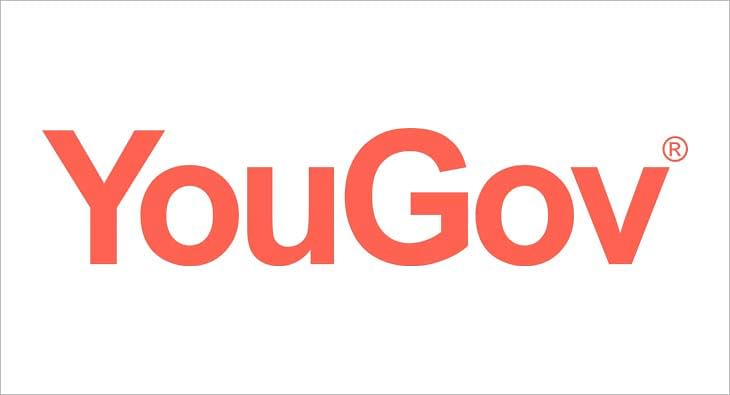
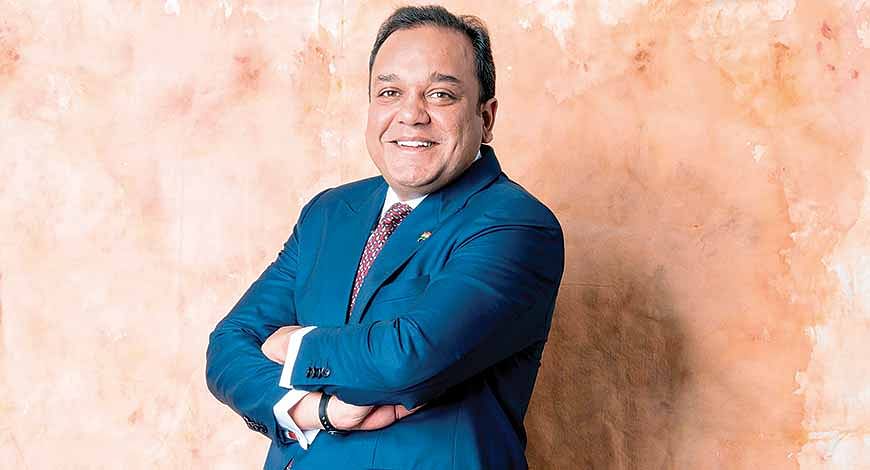
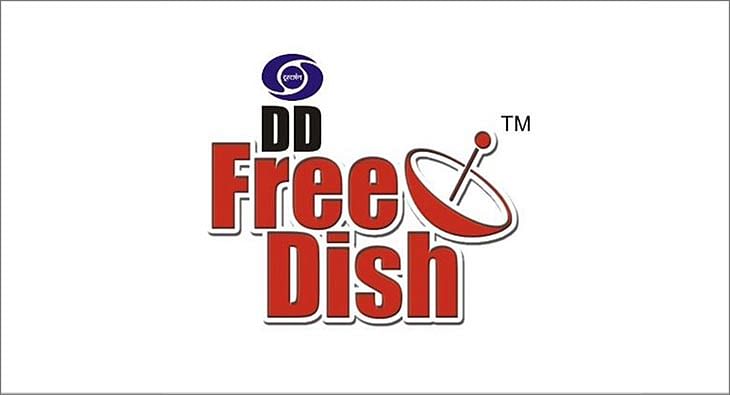







 Share
Share